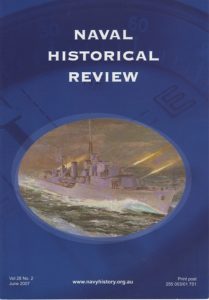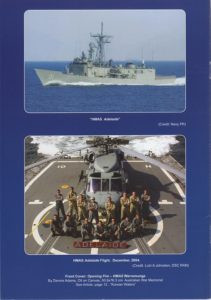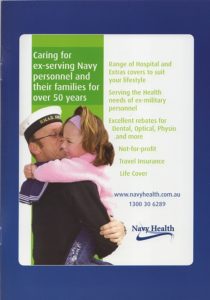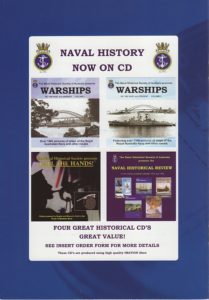On This Day
1942 > WW2
On This Day - 1942
- June 17, 1942
The Bathurst class minesweeper, (corvette), HMAS CASTLEMAINE, (LCDR P. J. Sullivan, RANR(S)), was commissioned. CASTLEMAINE was laid down in Williamstown Dockyard, Melbourne, on 17 February 1941, and launched on 7 August 1941. Mrs R. G. Menzies, (Wife of the Prime Minister), performed the launching ceremony.
- June 16, 1942
Australian Coastwatcher SBLT Cornelius Lyons Page, RANVR, was captured by the Japanese on Tabar Island. Page was later executed.
The tug HMAS ELWING was commissioned. ELWING was laid down in Rockhampton, QLD, in 1933. She was requisitioned for the RAN from her owners, the Rockhampton Harbour Board on 16 June 1942.
HMS JAVELIN, (LCDR Alliston, RN), removed the crew from, and sank, HMAS NESTOR, (destroyer), which was crippled south of Crete the previous day.
- June 15, 1942
HMAS NESTOR was severely damaged when near-missed by two heavy bombs, 100 miles north of Tobruk. NESTOR was an escort for the Operation Vigorous convoy to Malta. The destroyer was taken in tow by HMS JAVELIN, but was sunk by JAVELIN on 16 June when it was realised she could not reach port. For their courageous efforts Surgeon Lieutenant Watson was awarded the DSC and Petty Officer Ellston the DSM. Four ratings lost their lives in the action.
- June 14, 1942
HMA Ships NAPIER, NIZAM, NESTOR, and NORMAN, (destroyers), were subjected to ceaseless air attacks whilst escorting an eleven-ship eastern Mediterranean convoy, and were forced to turn back to Alexandria, well short of their objective.
Bombers from the Japanese 23rd Air Flotilla based on Timor, attacked Darwin, NT. During this series of raids the RAN Victualling Yard was heavily hit.
CMDR O. F. McMahon, RAN, was admitted to the OBE for distinguished service in HMAS CANBERRA, (cruiser).
LEUT H. D. Reid, GM, RANVR, was awarded the Bar to the George Medal for rendering safe enemy mines buried underground in various locations in England. Reid received the George Medal in June 1941 for similar acts of gallantry.
- June 13, 1942
RADM V. A. C. Crutchley, VC, DSC, RN, was appointed to command the Australian Squadron. He had been awarded his VC for services in HMS VINDICTIVE, during the raid on Zeebrugge in 1918.
- June 12, 1942
The Japanese submarine I-24, torpedoed and sank the Panamanian steamer GUATEMALA, 40 miles north-east of Sydney. The crew of 51 were picked up by HMAS DOOMBA.
- June 11, 1942
The Bathurst class minesweeper, (corvette), HMAS ARMIDALE, (LCDR D. H. Richards, RANR(S)), was commissioned. ARMIDALE was laid down in Mort’s Dock, Balmain, Sydney, on 1 September 1941, and launched on 23 January 1942. The Reverend A. G. Rix performed the ceremony, which was a floating rather than a launching.
- June 10, 1942
CMDR J. C. R. Proud, CBE, VRD, RANVR, was appointed Director of FELO. This organisation conducted the propaganda war in the Pacific for the Allies. One of its first operations was the dropping of leaflets printed in Pidgin English along the Kokoda Trail, urging native carriers to desert the Japanese. The operation was successful, and contributed to the success of the campaign.
- June 9, 1942
The bodies of four crew members of the midget submarines sunk in Sydney Harbour were cremated with full military honours, at Rookwood Cemetery, Sydney. The ashes were later taken back to Japan.
- June 8, 1942
HMA Ships ARUNTA, KALGOORLIE, ROCKHAMPTON, DOOMBA, MORESBY, BINGERA, YANDRA, KYBRA, and WHYALLA were assigned to convoy escort duties from Sydney as a result of the Japanese raid on Sydney Harbour.
- June 7, 1942
The Japanese submarine I-24 shelled the eastern suburbs of Sydney. On the same night I-21 shelled Newcastle. Damage in both attacks was negligible.
- June 6, 1942
The Japanese submarine I-24 attacked the merchant vessel ECHUNGA, 17 miles south-east of Port Kembla, but was kept at bay by the ship’s gun, until HMAS KALGOORLIE, (corvette),arrived on the scene.
- June 5, 1942
Japanese Radio announced the loss of three midget submarines in an attack on Allied shipping in Sydney Harbour.
- June 4, 1942
The Australian merchant ship IRON CROWN, was attacked and sunk by the Japanese submarine I-27, (possibly I-24) near Gabo Island. Loaded with manganese ore, the ship sank within a minute, and 37 of her crew of 42 died as a result. A patrolling RAAF Hudson bomber witnessed the sinking, and attacked the submarine without success.
- June 3, 1942
At 2200 hours the Australian coastal steamer AGE, came under attack from gunfire from a Japanese submarine, near Norah Head, NSW. The ship reached Newcastle without being hit. At midnight however, the merchant ship IRON CHIEFTAIN, carrying a cargo of coking coal, was attacked by the Japanese submarine I-21, some 27 miles east of Sydney, and sunk with the loss of 12 lives. The following morning 12 survivors were rescued by HMAS BINGERA, and another 25 made it ashore at The Entrance, Tuggerah Lakes, NSW, on 5 June.
A daring plan to rescue Australian POW’s held on Ambon, was vetoed by US commanders. The plan, which was approved by the RAN, involved the landing of a commando force from HMAS ARUNTA, and the Dutch cruiser TROMP. An intelligence report had indicated the island was only lightly held by the Japanese.
- June 1, 1942
During the attack on Sydney Harbour by Japanese midget submarines, a torpedo fired by one of the submarines at USS CHICAGO, (cruiser), missed the target and struck the sea wall on the eastern side of Garden Island. The force of the explosion blew the bottom out of HMAS KUTTABUL, (a converted Sydney ferry, now a depot ship), and the vessel sank at once. 21 sailors, (19 RAN and 2 RN), sleeping onboard, were killed or drowned. The Dutch K9, (submarine), which was moored outboard of KUTTABUL, was also damaged.
- May 31, 1942
Three Japanese midget submarines were released from their mother submarines off the east coast of Australia and commenced an attack on Sydney Harbour. The alarm was raised when one of the midget submarines was caught in the boom net across the entrance to Sydney Harbour, but by that time the other two had slipped into the harbour. The crew of the submarine caught in the boom net subsequently committed suicide by blowing the submarine up. Harbour patrol craft commenced searches for the submarines and carried out attacks on them. One of the midget submarines was caught in Taylors Bay and depth charges were dropped on her. With no hope of escape her crew then committed suicide.
The third submarine conducted a torpedo attack against USS CHICAGO, (cruiser), but the torpedo missed and subsequently sank HMAS KUTTABUL, (depot ship), berthed at Garden Island. 21 RAN and RN sailors sleeping onboard KUTTABUL were killed. This third midget submarine is believed to have escaped from Sydney Harbour, but disappeared and never returned to her mother submarine.HMAS CANBERRA, (cruiser), was fitted with A290 air warning radar Type 271 at Sydney’s Garden Island Dockyard. The equipment was on the secret list, and was fitted with explosive charges to ensure it did not fall into enemy hands.
The store-carrier HMAS BARALABA, was commissioned. BARABALA was laid down in Stettin, Germany, in 1921, and registered by the Australian United Steam Navigation Co Ltd in 1925. She was requisitioned for the RAN on 31 May 1942.
- May 29, 1942
The destroyer HMAS NEPAL, (CMDR F.B. Morris, RAN), was commissioned at Woolston, England.
A Japanese Navy seaplane from the submarine I-21, flew over Sydney and Newcastle, at night, to conduct reconnaissance in preparation for the midget submarine attack against Sydney Harbour which took place two nights later. The pilot, LEUT Susomo, reported he flew so low over Sydney Harbour that he was able to identify welding sparks from work being conducted at Cockatoo Island Dockyard. On return to the submarine, the aircraft crashed in the choppy seas, and sank, but Susomo swam to the submarine to make his report.
HMAS KURU, (auxiliary patrol vessel), returned to Darwin after making her first re-supply run to Australian troops still fighting a guerrilla campaign in Timor.
- May 28, 1942
HMIS BENGAL, (minesweeper), was launched at Cockatoo Island, Sydney. BENGAL was one of four ships built in Australia for the Indian Navy.
- May 27, 1942
The lugger HMAS GRIFFIOEN, was commissioned. GRIFFIOEN was acquired on loan from the Royal Netherlands Navy.
The auxiliary patrol vessel HMAS KURU, (LEUT J Joel, RANVR), made contact with the Australian commandos of Sparrow Force, then still fighting in Timor. LEUT Joel met with the units’ officers at Betano Bay on the south coast of Timor, and received a report from them on the situation ashore. Over the next 6 months RAN vessels were to make several runs to Timor, to provide supplies and re-enforcements to the beleaguered force.
- May 25, 1942
The trawler HMS LORD GREY, (LEUT C. Martin, RANVR), arrived at Colombo, Ceylon, (now Sri Lanka), after a seven month voyage from the United Kingdom. During the voyage LORD GREY met gales, suffered numerous mechanical breakdowns, and nearly all the crew were sick or injured at some time.
The Fremantle based USS SALMON (submarine), sank the Japanese repair ship ASAKI. The ship was a converted battleship, which had fought in the Battle of Tsushima.
- May 22, 1942
The repair ship HMAS PING WO, (LCDR D. M. Clarke, RANR), was commissioned. PING WO was a former Yangtse River ferry The ship had escaped from Singapore in February 1942, and was involved as one of the vessels which towed HMAS VENDETTA, (destroyer), to Australia. She served as a tender for HMA Ships KANIMBLA, MANOORA, and WESTRALIA, (landing ships infantry). PING WO, and another converted ferry HMAS WHANGPU, (repair ship), were known throughout the Navy as the ‘China Fleet’ ships.
- May 21, 1942
HMAS NIZAM, (destroyer), was quarantined at Kilindini with an epidemic of influenza aboard.
- May 17, 1942
The British Prime Minister, Mr. Winston Churchill, asked the Admiralty to report on the transfer of HMS FURIOUS to the RAN. The Admiralty reported the vessel could not be spared.
- May 16, 1942
HMAS HORSHAM, (minesweeper), was launched at Williamstown Dockyard, VIC, and HMAS BUNBURY, (minesweeper), was launched at Evans Deakin, Brisbane They were a part of the programme of 60 vessels of the class built in Australia during WWII.
HMAS WARRNAMBOOL, (minesweeper), evacuated 41 Dutch troops of Plover Force from the Aru Islands, in the Arafura Sea.



